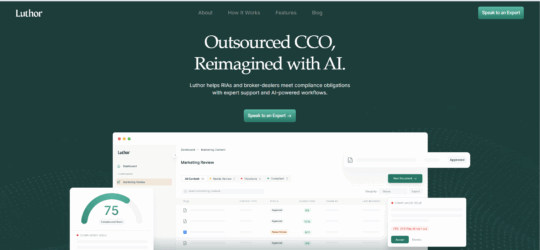Staying compliant as a Registered Investment Advisor (RIA) is a critical and ongoing responsibility.
With regulatory expectations continuously evolving and compliance scrutiny increasing, firms must implement strategic approaches to regulatory adherence.
In this article, discover how investment advisors stay compliant by focusing on key compliance pillars, adopting technology, and embedding compliance into their firm’s culture.
Understanding the RIA Compliance Landscape
The practice of RIAs is extremely regulated.
For example, RIAs disclose to clients, owe a fiduciary duty, keep records, advertise, and ensure cybersecurity under federal and state law.
Keeping up with these types of regulations is challenging with both knowledge and a proactive approach.
RIAs owe fiduciary duties of care and loyalty to their clients.
RIAs also owe clients disclosure duties.
RIAs comply with regulations.
They relate ethically to clients in business practices, furthering the fiduciary approach.
Key Components of an Effective Compliance Program
A compliance program will help create a strong regulatory environment, and investment advisors should consider the following elements as part of any compliance program:
Comprehensive Documentation and Recordkeeping
Transparent, precise, and systematic documentation of each contact with a client, each transaction, and investment decision, and compliance review is necessary.
This allows advisors to remain compliant with regulations and provides a solid defense if the advisor is audited or examined.
Cybersecurity and Data Protection
For the protection of clients' private information, RIAs must implement cybersecurity measures to reduce these risks.
For advice, encrypt plus control access, assess vulnerability, and plan responses to incidents.
Steps for data safety are proactive ones.
They build trust with both clients and regulators.
Regular Compliance Reviews and Updates
However, compliance work is not a one-time affair.
Firms must write compliance policies, conduct internal audits, and refresh the documents when regulations change in order to be prepared for the next audit.
Also, worker education matters, so staff know what to do.
Written Compliance Manual and Risk Management
Written rules, steps, and checks guarantee firm responsibility plus compliance, such as the CCO.
When we regularly assess risk, we identify weaknesses and gaps, and we can respond in a timely way to risks that relate to compliance or noncompliance.
Leveraging Technology to Simplify Compliance
Meeting these and other compliance requirements manually can be difficult for many RIAs.
Technology-powered compliance platforms can assist through features such as deadline and filing tracking, storage of documents, and communication.
These tools cut down on human error and improve efficiency and supervision to help businesses be continually compliant.
For example, Luthor.ai offers compliance solutions for investment advisors that improve compliance through consolidated workflows and monitoring capabilities.
Practical Steps to Enhance Compliance Posture
Implementing and maintaining a strong compliance program involves concrete actions.
Here are practical strategies for advisors seeking to strengthen their compliance posture:
-
- Assess and upgrade your compliance infrastructure: Ensure your current compliance resources and systems meet your firm’s operational demands. As your firm grows, your compliance solutions should scale accordingly.
- Stay informed on regulatory developments: Monitor regulatory bodies continuously for updates and trends. Integrate regulatory changes swiftly into your policies and daily operations.
- Enhance transparency with clients: Transparent disclosure about fees, potential conflicts of interest, and investment strategies is fundamental. Clear communication reduces misunderstandings and regulatory risks.
- Focus on staff education and culture: Ongoing training on compliance policies, ethical conduct, and cybersecurity prepares your team to act responsibly and consistently.
- Maximize technology benefits: Utilize platforms for compliance tracking, document retention, and workflow automation. These tools save time and provide thorough audit trails.
How Investment Advisors Stay Compliant
The best of these investment advisors create not just compliance systems but a discipline, knowledge, and tools to help advisors reduce exposure, preserve client confidence, and shield their business from costly infractions.
Compliance should be embedded in the culture of the firm at all levels, from management through to all employees, and it should be committed to ethical conduct.
To understand how investment advisors achieve compliance today, one needs to understand compliance as a process, not a goal.
Conclusion
The steps required to ensure RIA compliance, although complicated, are not outside the reach of many firms.
Documentation, cybersecurity, training, and technology like Luthor.ai's compliance platform can help firms remain compliant.
By following compliance best practices, investment advisors build client trust and help ensure the long-term success of the business while protecting the client base and the firm's reputation.
Best practices help investment advisors adhere to regulations while remaining nimble in an evolving regulatory landscape.
Recommended For You:
10 Tips for Consolidating Your E-commerce Site’s Payment Policies





